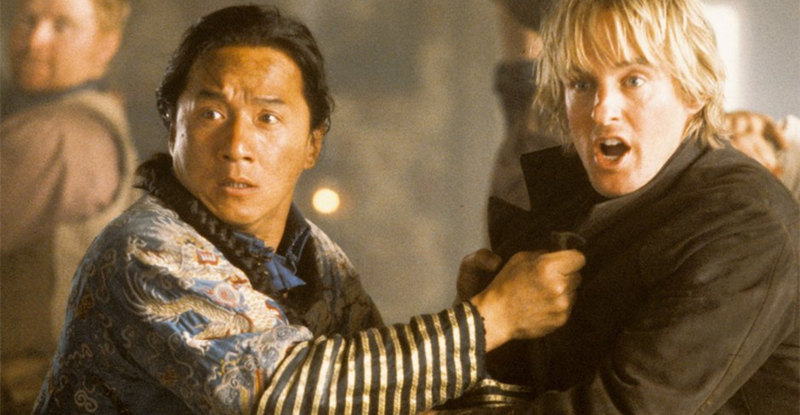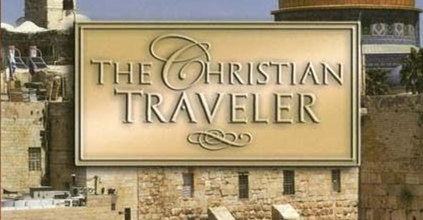America in Primetime” is a four-part documentary that aired Sundays on PBS between October 30 and November 20 this past year. Fans of TV will enjoy seeing the wide array of clips and recent interviews with former TV stars talking about their shows and others, because when you spend so much time with a TV personality over the years you feel close to them, however irrational that seems. It’s one of the contradictions of television–that it’s both a mass media, but also more intimate than the theater because of it’s small size and the fact that you watch your favorite shows and characters in the privacy of your own home. Consider the millions who watched Johnny Carson on “The Tonight Show” in their pajamas, in the comfort of their own beds. The only thing that would make it more intimate would be if . . . well, never mind. That’s something for a “Chelsea Lately” roundtable.
But for a purported overview of the evolution of certain character types on TV, “America in Primetime,” doesn’t provide enough of a history, because the filmmakers devote too much time to recent shows, some of which seem to wander off-thesis. Plus, what we see is a roundup of opinion that doesn’t reflect the level of research you’d expect from a series attempting to draw conclusions about American television. Complicating matters? It would be tough enough to do an overview of sitcoms in four hours and decide which ones to include and why, but when sitcoms and dramas are combined? It can start to feel a bit spotty, like a fruit salad made from apples and oranges.
I do think it’s clever of director Lloyd Kramer to try to explore TV through character types–though anyone who’s ever constructed a system of classifications knows the risks involved. It could be dismissed as reductive thinking if you forget or intentionally leave out other “types” that could have been included. Like what about surrogate families, clowns, criminals, lovable con-men like Sgt. Bilko or Lt. McHale? Another problem when you classify TV characters according to “The Independent Woman,” “Man of the House,” “The Misfit,” and “The Crusader,” is that there’s bound to be some overlapping . . . unless you define each category thoroughly. I don’t think that happens here, and I don’t think the “thesis” for each episode is fully explored. Not that I’m a big fan, but with voiceovers and a narrative script at least things are kept on track. When you rely on flash clips from a number of shows and longer ones from select series, intercut with recent interviews–flow is dependent upon editing and juxtaposition. Sometimes it works; sometimes it doesn’t.
With “America in Primetime,” too often it feels like one thing leads to another and eventually strays from the original concept. In “The Crusader” segment, we go from caped crusaders and Western heroes to the ‘70s and Alan Alda’s character in “M*A*S*H.” Fine by me. Hawkeye was a peacenik who had an agenda to advance, and he advanced it every chance he got. He tried to take out the appendix of a healthy officer with a reputation for recklessness, just to save lives, and he drove to the peace talks to give a stern talking to both sides. But to call his buddy Trapper John a crusader too, just because he’s a doctor? Sorry, I don’t buy it. Yet, that’s the direction the narrative goes following the “M*A*S*H” mention. We get a montage of other TV doctors (“Ben Casey,” “Dr. Kildare,” and “Marcus Welby”), as if to imply that they too are crusaders, then we get longer clips and people talking about “E.R.” and “House,” and before long we’re talking about “flawed” characters who are into drug abuse . . . and somehow we’re still supposed to consider them crusaders. When one of the interviewees says House is “always trying to connect with life and always coming up short,” you have to wonder how we’ve wandered so far from the idea of Superman crusading for truth, justice, and the American way that we were introduced to at the outset. Evolution is one thing, but to call some of these later characters “crusaders” seems quite the stretch.
But I think the average TV-lover will forgive any shortcomings this series has, just because there are a lot of interesting people featured–more than 50 of them, including Jason Alexander, Judd Apatow, Alec Baldwin, Roseanne Barr, James L. Brooks, Diablo Cody, Larry David, Danny DeVito, Edie Falco, Dennis Franz, Michael C. Hall, Patricia Heaton, Ron Howard, Felicity Huffman, Julia Louis-Dreyfus, David Lynch, Julianna Margulies, Jerry Mathers, Mary Tyler Moore, Elisabeth Moss, Mary-Louise Parker, Carl Reiner, Dick Van Dyke, and Rainn Wilson. Still, the majority of interviewees are people who spend their time behind the cameras, and many viewers might wish for a few more interviews with people who work in front of them. I know I felt that way. Plus, just when someone like Jerry Mathers seemed to get rolling, instead of “Leave It To Beaver” clips what followed was (you guessed it) another shift in topic.
If you’re looking for a true overview that discusses the evolution of a character, you’ll find that “America in Primetime” comes closest with the second installment, “Man of the House.” This episode is what I expected all of them to be, one that provides you with a good sense of how the idea of the father figure in American television has changed over the years. Some of the logical bases are covered, like “Father Knows Best,” “Leave It to Beaver,” “The Dick Van Dyke Show,” “The Andy Griffith Show,” “The Cosby Show,” and “Home Improvement,” as well as “thirtysomething.” There’s a nice balance to this episode and enough short clips of TV series to enable you to see a pattern and believe the conclusions that people draw.
“The Independent Woman” is next strongest, but I found myself scratching my head a number of times. I mean, with a title and category like that, wouldn’t you expect an overview-history of the development of female characters on TV, as we got with “Man of the House”? We experience a little of that, with talk of how Laura Petrie on “The Dick Van Dyke Show” was independent because of those Capri pants, and Lucy was independent because she was determined to pursue any crazy gambit to break into show business. But where was “That Girl” Marlo Thomas? Or the first African American TV star, Diahann Carroll as “Julia”? And why was there no mention of the fact that while Donna Reed portrayed a perfect housewife on TV, she was also the creative and business force behind “The Donna Reed Show,” and a behind-the-scenes feminist in a good-old-boy’s business? Likewise, where was “Our Miss Brooks,” a show in which Eve Arden (“Grease”) played a schoolteacher? It’s not as if all women on TV in the ‘50s were stay-at-home housewives in the Margaret mode of “Father Knows Best.”
“Murphy Brown” makes total sense in an episode like this, as does “Sex and the City,” “The Good Wife,” and “Grey’s Anatomy.” But I have to say that I didn’t understand the leap from independence to lawlessness and out-of-control women. “Weeds” is prominently featured in a long segment, as is “Nurse Jackie.” I thought an independent woman was a strong woman, not someone dependent on drugs or someone whose life was spiraling out of control. That’s a weakness, not a strength, and I don’t see her character as being on the same evolutionary line as Mary Richards.
If you put gender aside, I thought that “House” has more in common with “Nurse Jackie” than any other show. Both of them are hooked on pills, but it’s funny how in this series the doctor is considered a “crusader.” As for “The Misfits,” we briefly see clips of Bob Denver’s characters Maynard G. Krebs and Gilligan, where I thought we’d get a longer look and more grounding in some of the older misfits before moving forward. More than the first episodes, the last two are heavy on current series and spend an awful lot of time on them, even opening with them so you really don’t have the broad sense of history you get from the first two installments. The “Glee” kids are shown on a clip, and we get a “family of misfits” with “Arrested Development” or “The Addams Family,” but I have to say that I don’t understand why a show like “Twin Peaks” would be included here. I had the same head-scratching reaction to cop shows like “NYPD Blue,” “Homicide: A Year on the Street,” “The Shield,” and “The Wire” dominating “The Crusader” episode.
But as I said, there’s so much good material here that even if something seems out-of-category to you or if an episode seems to wander off-thesis, individually the segments are still worth watching. Call it the power of TV, or the power of nostalgia, or a deep-seated need to justify all those hours we’ve spent in front of the “boob tube.”
Video:
This is a clip show, and so quality varies considerably. Since the current interview segments were obviously shot with a digital camera, even on standard def the quality of the newer footage is very good. And since the bulk of these episodes are vintage clips, I can see many viewers happily opting for the DVD instead of the Blu-ray. “America in Primetime” is presented in 1.85:1 aspect ratio.
Audio:
The Dolby Digital 2.0 Stereo, same as on the Blu-ray, is surprisingly effective, with a richer sound than we usually get from that mode and a clarity that matches what we’re seeing on the interviews. But the only subtitle option is English SDH.
Extras:
I liked the interview segments, and there are outtakes from 20 of the interviews included here as bonus features. To me, they’re fascinating not just because these folks have insights worth recording, but they show as well what different directions this series could have gone.
Bottom line:
“America in Primetime” may not be the comprehensive overview that I expected, but if you take what the filmmakers give you, there’s a lot here to entertain and inform.


